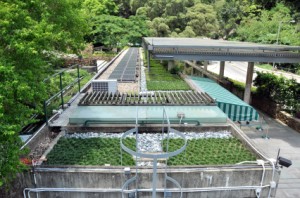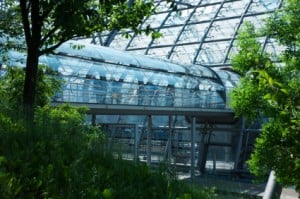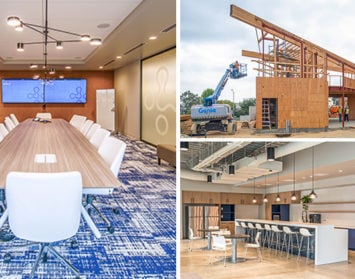 Even if we can’t agree on the root causes of environmental change, we all seem to have agreed that going green is a good thing. From more fuel efficient vehicles and extensive recycling to the development of green algae that snack on greenhouse gases, environmental awareness is everywhere, even in the construction industry.
Even if we can’t agree on the root causes of environmental change, we all seem to have agreed that going green is a good thing. From more fuel efficient vehicles and extensive recycling to the development of green algae that snack on greenhouse gases, environmental awareness is everywhere, even in the construction industry.
Builders, owners and developers have embraced the “Green Building Movement” and often look for creative ways to incorporate green building elements into their projects. The most common benchmark has been established by the USGBC (US Green Building Council) and is referred to as LEED (Leadership in Energy and Environmental Design). In addition to the trend to implement the components of this program, several of our clients and our own company have embraced a strategy, “The Greenest Building,” where an existing building can be saved, remodeled and repurposed to meet a company’s specific requirements instead of building from the ground up or tearing down an old structure and starting over. By working with an existing structure, we avoid significant demolition, redundancy and waste while also preserving some historic elements of our city. These types of redevelopment projects will become more common as we reach the limits of our vacant, buildable land in the suburbs and look more to infill redevelopment projects around the city’s urban core.
 Remodeling an old structure definitely has its challenges. Oftentimes the biggest challenge is all of the unknowns – the issues with the existing structure and land that you can’t assess until you start peeling away the layers and de-constructing the existing building. These can include hazardous material issues due to asbestos or lead paint; structural upgrades to buildings in order to meet the current seismic code requirements; removal and replacement of old and outdated mechanical, electrical and plumbing systems; the shear cost of demolition to remove unwanted improvements to make room for a new configuration; and more. However, the cost savings available by reusing an existing building are significant. For example, if the cost of construction can be reduced from $300 to $200 per square foot, then on a 10,000 square foot building, you save $1 million dollars. This is one of the reasons that so many people like the idea of a Greenest Building Strategy.
Remodeling an old structure definitely has its challenges. Oftentimes the biggest challenge is all of the unknowns – the issues with the existing structure and land that you can’t assess until you start peeling away the layers and de-constructing the existing building. These can include hazardous material issues due to asbestos or lead paint; structural upgrades to buildings in order to meet the current seismic code requirements; removal and replacement of old and outdated mechanical, electrical and plumbing systems; the shear cost of demolition to remove unwanted improvements to make room for a new configuration; and more. However, the cost savings available by reusing an existing building are significant. For example, if the cost of construction can be reduced from $300 to $200 per square foot, then on a 10,000 square foot building, you save $1 million dollars. This is one of the reasons that so many people like the idea of a Greenest Building Strategy.
When embarking on the process of remodeling an existing structure, it is important to make sure you have a clear understanding of the potential hidden costs. We highly recommend a detailed due diligence period to evaluate such items as the potential for hazardous materials, the structural integrity of the building, the condition of the roof, the condition and remaining useful life of the mechanical, electrical and plumbing systems, the potential ADA issues and an inspection for termites. You must also check the zoning for the property to ensure that you can use the building for your new intended purpose. Sometimes you must go through a lengthy CUP (Conditional Use Permit) process to change the allowed usage of a property to meet your specific needs.
While there are myriad issues that must be evaluated, with the help of an experienced construction manager to outline and orchestrate the process, the benefits to your bottom line and to the environment are worth it. After all, the greenest building is a building that already exists.
Hughes Marino’s industry leading Construction Management team has unmatched expertise in every type of commercial building project from tenant improvements to ground-up build-to-suits. With decades of experience in California and beyond, our project managers, engineers and LEED APs offer practical insights for the construction management professional.









